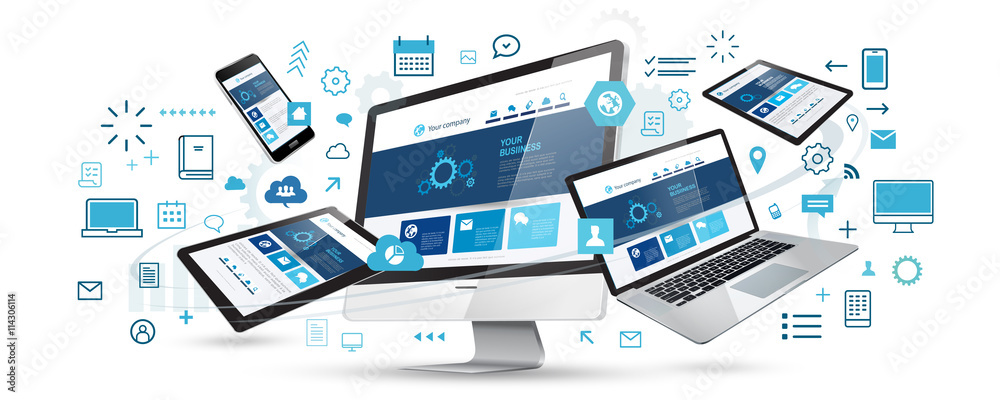Essential Tools for Managing Employee Devices in 2025
Mobile device management (MDM) software is no longer a luxury but a necessity. It enables businesses to monitor, manage, and secure employee devices, whether smartphones, tablets, or laptops.

In 2025, businesses are increasingly reliant on mobile device management software to ensure seamless operations, data security, and employee productivity. As remote work becomes a norm and the number of connected devices skyrockets, managing these devices has become a top priority for organizations of all sizes. Choosing the right solutions requires an understanding of the tools available and their potential impact on your business.
Why Mobile Device Management is Crucial
Mobile device management (MDM) software is no longer a luxury but a necessity. It enables businesses to monitor, manage, and secure employee devices, whether smartphones, tablets, or laptops. With the rise of bring-your-own-device (BYOD) policies, MDM software ensures that company data remains secure while allowing employees the flexibility to work on their personal devices.
In 2025, the focus has shifted to solutions that offer robust security, streamlined management, and scalability. These tools are designed to address modern challenges such as remote device access, cybersecurity threats, and regulatory compliance.
Key Features of Modern MDM Solutions
Modern mobile device management software comes equipped with various features tailored to today’s business needs. Centralized control is a cornerstone, allowing IT administrators to manage all employee devices from a single dashboard. This feature simplifies tasks like application deployment, system updates, and access permissions.
Data security remains a primary concern. Advanced MDM tools offer encryption, remote wipe capabilities, and secure app management to protect sensitive information. Furthermore, geofencing and location tracking help businesses monitor device usage and ensure compliance with company policies.
Integration capabilities are another critical aspect. Today’s businesses rely on a wide range of applications and services, and MDM software must seamlessly integrate with existing IT infrastructure. Compatibility with cloud-based solutions also plays a significant role, enabling remote device management without compromising efficiency.
The Role of Artificial Intelligence in MDM
Artificial intelligence (AI) is revolutionizing the mobile device management landscape. AI-powered MDM solutions provide predictive analytics, helping businesses identify potential security threats before they occur. Automated workflows are another advantage, reducing the workload for IT teams and ensuring timely updates and patches.
AI also enables personalized user experiences by analyzing usage patterns and suggesting optimizations. This not only enhances productivity but also ensures that devices operate at peak efficiency. In 2025, investing in AI-integrated MDM software is no longer optional for businesses aiming to stay ahead.
Choosing the Right MDM Software
Selecting the best mobile device management software requires careful consideration. Scalability is essential, especially for growing businesses. The chosen solution must accommodate an increasing number of devices without compromising performance.
User-friendliness is equally important. An intuitive interface ensures that IT teams can quickly adapt to the software, minimizing downtime during implementation. Cost-effectiveness is another factor, as businesses must balance robust features with budget constraints.
When evaluating MDM software, look for vendors that offer comprehensive customer support and regular updates. The rapidly evolving digital landscape means that outdated software can expose businesses to significant risks.
Benefits of Implementing MDM Solutions
The benefits of adopting mobile device management software extend beyond security. Improved employee productivity is a significant advantage. By providing seamless access to essential tools and applications, MDM software ensures that employees can work efficiently, regardless of location.
Cost savings are another critical benefit. Properly managed devices reduce the risk of data breaches and hardware failures, leading to lower maintenance costs. Moreover, compliance with industry regulations becomes more manageable, reducing potential fines and legal issues.
Enhanced collaboration is another outcome of implementing MDM solutions. With secure communication tools and streamlined workflows, employees can collaborate effectively, even in remote settings. This is particularly important in 2025, as hybrid work models become increasingly prevalent.
Future Trends in MDM
The future of mobile device management software lies in continuous innovation. As 5G networks become more widespread, MDM solutions will need to adapt to the increased speed and connectivity. Edge computing is another trend, enabling real-time data processing on devices rather than relying on centralized servers.
Sustainability is also gaining traction in the tech industry. Eco-friendly MDM solutions that optimize energy consumption and extend device lifespans are expected to become more popular. Businesses are increasingly prioritizing sustainability to align with global environmental goals.
Conclusion
In 2025, mobile device management software will play an indispensable role in modern business operations. By offering robust security, streamlined management, and integration capabilities, these tools address the challenges posed by an increasingly digital and mobile workforce. Investing in the right MDM solution ensures not only the security of company data but also enhanced productivity and cost savings.
As technology continues to evolve, businesses must stay informed about the latest trends and advancements in mobile device management. Choosing a forward-thinking solution will position your organization for success in an increasingly connected world. Prioritize scalability, security, and user-friendliness to make the most of your MDM investment.
What's Your Reaction?
 Like
0
Like
0
 Dislike
0
Dislike
0
 Love
0
Love
0
 Funny
0
Funny
0
 Angry
0
Angry
0
 Sad
0
Sad
0
 Wow
0
Wow
0



















































